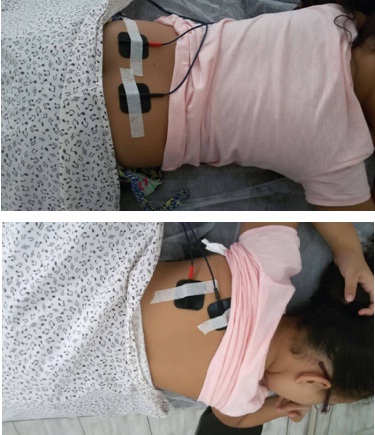Evaluate the effectiveness of PTENS in weekly sessions in the treatment of overactive bladder in children - a pilot study
Lidyanne I. S. de Paula, Master1, Liliana F. Oliveira, Master1, Dayana M. Oliveira, Master1, Victor P. Paschoalin, Doctor2, André A. de Figueiredo, Doctor1, José de Bessa Jr., Doctor2, José Murillo B. Netto, Doctor1.
1Universidade Federal de Juiz de Fora, Juiz de Fora, Brazil, 2Universidade Estadual de Feira de Santana, Feira de Santana, Brazil.
Introduction: Overactive bladder (OAB) is the most prevalent voiding disorder in childhood, and its main manifestation is urinary urgency. In general, urotherapy is the first choice of treatment. It may be associated with anticholinergics or not. Parasacral Transcutaneous Electrical Neural Stimulation (PTENS) was introduced as an alternative for the treatment of children with detrusor overactivity, but the treatment protocols described require several sessions per week, making it difficult for the child to adhere to the treatment. Thus, this study aims to evaluate the effectiveness of PTENS in single weekly sessions in the treatment of (OAB) in children.
Materials & Methods: Prospective, randomized controlled trial in which 16 children were divided into two groups: CG (urotherapy and electrical stimulation placebo) and SG (urotherapy and PTENS). In both groups, 20 weekly sessions, with duration of twenty minutes each, were carried out once a week. The children were reassessed at the end of the 20 sessions (T2), and 60 days after the completion of treatment (T3), with both a 3-day voiding diary, visual analog scale (VAS), Rome III diagnostic criteria and the Bristol Scale.
Results: The groups were similar in age, gender and ethnicity. No differences were found between the groups regarding the volumetric measurements made in the voiding diary, urinary frequency and constipation evaluated by the Rome III criteria and the Bristol Scale. Sixty days after treatment, a significant improvement was found in the SG group (p = 0.030) regarding urgency, as well increase in dry nights in those presenting with enuresis (0.039). At the end of 20 sessions and after 60 days of treatment, those responsible for the children in the SG perceived greater improvement over those responsible for children in the CG (p = 0.052 and 0.046 respectively) measured by the VAS.
Conclusions: The PTENS performed with single weekly sessions proved to be effective in treating the bladder for symptoms of urinary urgency, enuresis and in the perception of those responsible for the children, but further studies with larger populations are needed to corroborate these results.
| Median | p Value | ||
| T2 | 0.052 | ||
| CG | 6 [5-7] | ||
| EG | 8 [7-10] | ||
| T3 | 0.046 | ||
| CG | 6 [5-7] | ||
| EG | 8 [7-8] |

| EG | CG | p Value | |
| Urinary urgency | |||
| 0.030 | |||
| Yes (%) | 2 (28.57) | 6 (85.71) | |
| No (%) | 5 (71.43) | 1 (14.29) | |
| % dry nights | |||
| 0.039 | |||
| Median | 57.1 [50-78.6] | 28.5 [17.8-60.7] |
Back to 2016 Fall Congress
